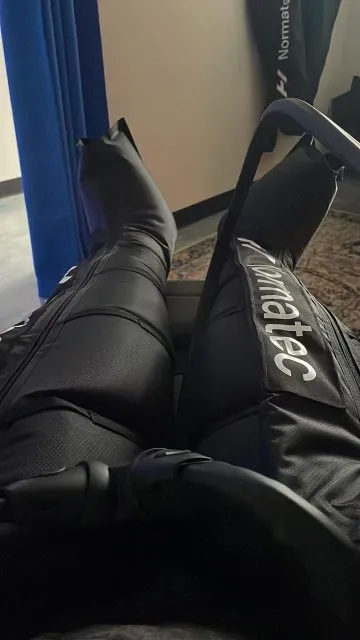Relax & Renew
Experience the transformative power of wellness through our comprehensive range of therapeutic treatments
Schedule Whole Body Cryotherapy, Compression Therapy, Infrared Sauna & more to be the best version of you
Therapeutic Wellness
Discover our comprehensive range of wellness and recovery therapies designed to help you feel your absolute best.

Whole Body Cryotherapy
A 3-minute whole-body cold-therapy session will reduce joint and muscle pain, boost energy and metabolism, while increasing the body's natural healing abilities.

Infrared Sauna
Relax and renew for 30 minutes in our Infrared Sauna. Benefits include decreased joint pain, lower blood pressure, improved circulation, and reduced muscle pain.

Contour Pod
The Contour Pod gives infrared and red light therapy to help with weight loss & fat reduction, skin tightening, reproduction of collagen, and more.

Compression Therapy
The NormaTec Compression Boots use compressed air to massage your legs, arms, and hips, aiding in lymphatic drainage, reducing lactic acid buildup, and increasing blood flow.

Cold Plunge
Sports medicine has utilized cold water therapy for years to help the active recovery of your muscles, boost dopamine, and reduce inflammation.

Localized Cryotherapy
This therapy is used to focus on pain relief, muscle healing, and promote the anti-inflammatory response in a specific area of the body.

Esthetics & Beauty
Transform your appearance with our advanced aesthetic treatments including cryo facials, cryo sculpting, and LED light therapy for skin rejuvenation.
Latest Updates
See what's happening at Below Zero Cryo Spa on Facebook
Stories of Transformation
Real stories from real people who have transformed their wellness journey with us
"I have been coming here for several months and it has been a game changer. No more daily aches and pains."
"This place is AMAZING! Highly recommend! The cryo and cold plunge have helped me recover from the many hours I spend on the pickleball court."
"The staff members at Below Zero are fun, professional, knowledgeable, and always encouraging. My overall health has benefited greatly since joining."
Give the Gift of Wellness
Send a gift card to friends and family or buy it now for your future use. The perfect way to introduce someone to the benefits of wellness therapy.
Purchase a Gift Card